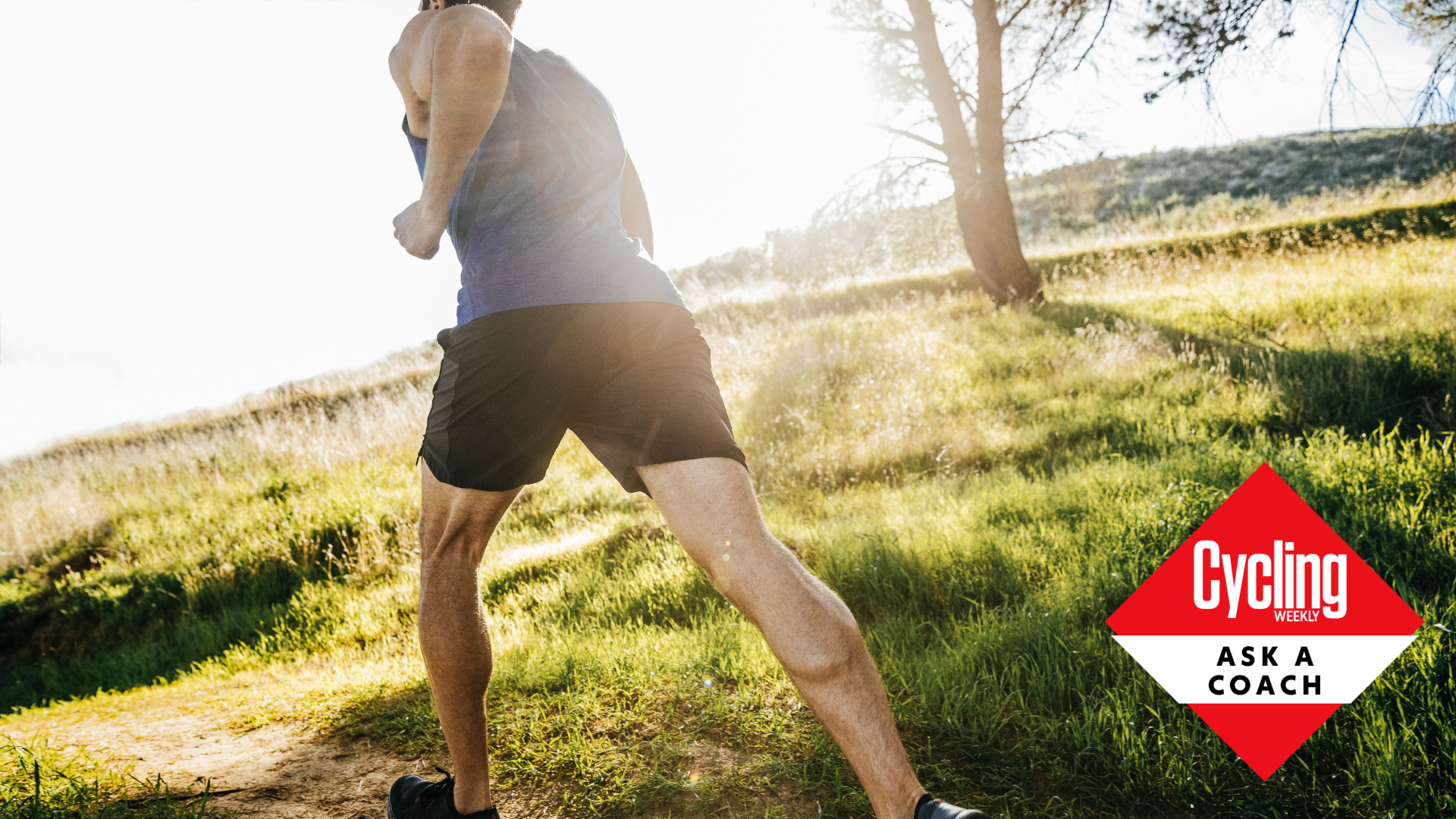Ask a coach: ‘If I can’t go on a bike ride, is it worth going running instead?’
Whether it’s a busy work/life schedule, a trip away from home or the dark winter evenings, there’s a host of reasons why fitting in a ride might be a struggle – but how good an alternative is running, really?


Any cyclist who has had the (dis)pleasure of dabbling in running will be able to tell you that you get home after a 20 min run considerably more tired than you would after a one hour bike ride.
This isn’t about answering whether cycling or running is better, this is about exploring whether adding running to your training is the perfect solution for time-crunched cyclists – and whether it’s better than opting for a short and sharp HIIT session, like these 30-minute cycling workouts.
James Spragg takes us through the similarities and differences between running and cycling, as well as the all-important details on how to add running into your cycling training plan, if you are looking to go down that path.

Sports scientist and coach James Spragg is one of the experts who will be answering your questions in Cycling Weekly's ASK A CYCLING COACH series which comes out every Wednesday. Working both in research and applied settings, he currently runs Intercept Performance Consultancy.
Running is popular cross training for cyclists, even the pros. But that’s not to say that there aren’t also some major differences between cycling and running.
“I’ve had a blast pulling on my running shoes this off season. On Sunday I competed in my first ever trail running race. It was a pretty challenging 15km on some very hilly & technical trails."Anyone else enjoy cross-training like Jimmy? ✋ ⬇️ #MondayMotivation pic.twitter.com/lwnvwue2ORNovember 15, 2021
When cycling, we are mainly just pushing on the pedals. Yes, we do lift the legs a little in the second half of the pedal stroke but if we are pedalling nicely this is more about getting the foot out of the way and not applying any negative pressure than it is about really producing any force.
When pedalling, we use the big muscle groups in the upper leg (quadriceps, glutes and hamstrings) in a concentric manner. What this means is that the muscles are shortening as they produce force. Simultaneously, we use the muscle of the lower leg; mainly the gastrocnemius (calf) and the tibialis anterior (the muscle down the front of your shin) to stabilise the ankle. This allows an efficient power transfer from your leg, through the foot and pedal to the cranks.
However, running is quite different.. When running we still use the muscles of the upper leg, but we now use them both concentrically and eccentrically. Eccentric movement is where the muscle is lengthening under load.
The latest race content, interviews, features, reviews and expert buying guides, direct to your inbox!
Whenever we stride forward we need to cushion the blow of landing – this cushioning is achieved in two ways – firstly through eccentric contractions in the quadriceps, and secondly via elastic storage in the muscles and tendons of the lower leg. As we land some of the shock is absorbed by the upper leg bending (the eccentric contraction) and the rest is absorbed by the lower leg; this energy is stored – a little bit like stretching a spring. As we bound into the next stride, this energy is released, and it propels us forward.
So even though the muscles used are very similar when running and cycling, the way in which they are used is quite different.
But does this matter?
Well, the answer (as always) is yes and no. Firstly, running and cycling are both great ways to get in an aerobic workout. You are going to be breathing hard and your heart rate will be nice and high. Therefore, from a cardiovascular point of view, a quick run can be very beneficial. It’s typically harder to stay at lower intensities when running compared to cycling, therefore even a 20min run will likely feel like a 20min threshold effort and you’ll get the same sort of cardiovascular benefits.
However, because of the differences in how the muscles are used, those cardiovascular benefits might be outweighed by the damage done to your muscles.
Because cyclists are not accustomed to either the eccentric loading of the upper leg or the elastic loading of the lower leg but are reasonably fit, it is very easy for them to go out and absolutely destroy their legs in the first 20mins. The best-case scenario if you suddenly start running is a bad case of DOMS (delayed onset of muscle soreness) – your legs will be incredibly stiff, tender to the touch and pretty useless on the bike. The worst-case scenario is that you can injure yourself and end up with a significant amount of time off the bike.
How to add running to your cycling training routine
However, it is possible, with adequate time and patience, to add running to your cycling training program. This way you can get the benefits of a short but hard work out, without the injury risk. This will likely be particularly beneficial on the bike in those prolonged efforts just below threshold.
To do this the key is to build up any running incredibly carefully. The first sessions should not feel aerobically taxing at all – the only goal of these sessions should be to give the legs a very small taste of the new movements. I would suggest keeping these sessions very short (max 20 mins) and suggest only running once every three days to start with – this gives the muscles and tendons enough time to adapt and recover between sessions.
Once only you can do 20 mins at 5/10 intensity without any stiffness or pain either during the run itself or the next day would I suggest you go any longer or harder.
So running can be a nice addition to a training plan – especially if you are targeting gains in and around threshold, but it will take time and patience to implement. Trying to rush the process might result in injury which will only further reduce the amount of training you can do.
In this age of online training plans and workouts, do you ever find yourself with a burning question you’d like to directly ask a cycling coach? Well, now is your chance to ask away! In this series, we’ll be putting your questions to expert coaches – send them in to Cycling Weekly's Fitness Features Editor at anna.abram@futurenet.com.
James Spragg is a sports scientist and coach, working both in research and applied settings. When not working with athletes James can be found skiing, climbing, cycling or drinking coffee!
Alongside Dan Lorang and Peter Leo, James runs Intercept Performance Consultancy. Over the last 8 years in various roles, as coaches, performance consultants, performance managers, and sports scientists, Dan, James and Peter have played a role in helping athletes achieve more than 10 World Championship titles, several Olympics medals (including a Gold and Silver Medal in Tokyo 2020) and several Top 5 results in some of the biggest sporting events on the planet (Tour de France, Olympics, World and European Championships). Our single focus is on improving performance in all settings.